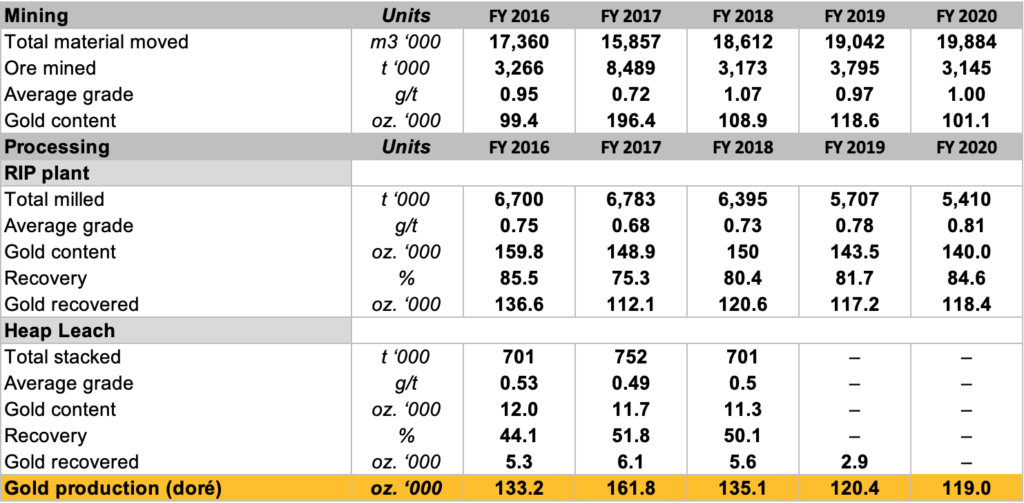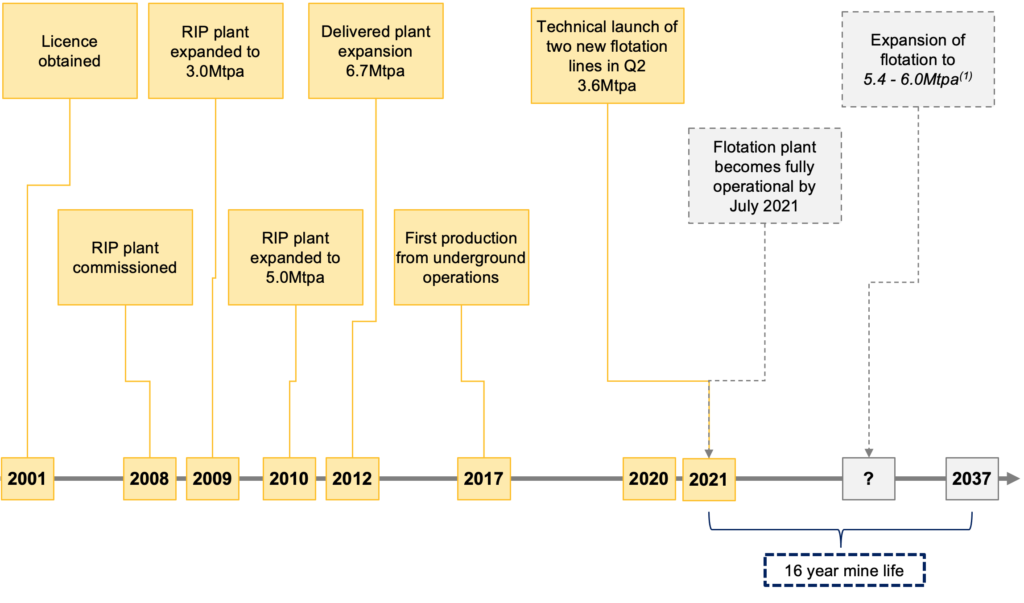Pioneer
Key facts
| Location | 40km north of Pokrovskiy (location of POX Hub) |
|---|---|
| History | Acquired as a greenfield licence in 2001
Commercial start – up in 2008 2.8Moz gold produced to date |
| Licence type/status | 5 licences, valid until 2024 – 2040 |
| Mining method | Conventional open pit + underground mine |
| Mineralisation type | Epithermal low sulphidation |
| Processing circuit | RIP plant, with flotation from Q2 2021 |
| Plant capacity | 6.7Mtpa RIP plant |
| 2020 Recovery | RIP 85% |
| JORC Ore Reserves(1) |
0.48Moz non-refractory (0.95g/t) 2.16Moz refractory (0.97g/t) |
| JORC Ore Resources(1) |
1.23Moz non-refractory (0.90g/t) 4.28Moz refractory (0.68g/t) |
| Workforce | c.2,900 |
| Power | National grid |
(1) As of 31 December 2020, Mineral Resources shown as Measured & Indicated, inclusive of Ore Reserves
At a glance statistics

Overview

Pioneer is considered by management to be one of the largest gold mines in Russia based on processing capacity. In 2020, Pioneer processed non-refractory ore from both open pit and underground mining operations to produce 119Koz, which accounted for 22% of the Group’s total gold production. In Q1 2021, Pioneer produced approximately 24.1Koz.
Three pits are currently in operation and the area is considered prospective and is actively being explored. Underground mine development commenced in Q3 2016 in the North East Bakhmut area using sublevel open stoping with waste backfill.
At 31 December 2020, Pioneer contained an estimated 5.51 Moz of gold in Measured & Indicated Mineral Resources, of which approximately 2.64Moz were contained in Proved and Probable Ore Reserves.

Operations
Pioneer is a bulk tonnage mine with multiple open pits and an underground mine. The Pioneer orebodies include both non-refractory and refractory ore. Non-refractory ore is processed at the 6.7Mtpa RIP plant, which operates throughout the year.

The new POX Hub has enabled gold production from the refractory ore and a new 3.6Mtpa flotation facility had a technical launch in June 2021. Once operational in July 2021, 3.6Mtpa of milling capacity will be diverted away from the 6.7Mtpa RIP plant.

(1) Discrepancies between gold recovered and gold produced is a function of gold recovery from the processing circuit
Geology
Gold mineralisation at Pioneer was formed near a contact between a granitoid massif and Jurassic country rocks, as a result of hydrothermal processes during the late Mesozoic Period.
Pioneer contains five licences covering multiple orebodies, most of which are steep dipping, and remain open in a down dip direction. Pioneer orebodies comprise of high-grade shoots and lower grade halo mineralisation. The high-grade shoots are generally 1 to 8 metres in thickness with low-grade halos up to 200m thick with a strike length of up to 2km. Many of the high-grade pay shoots are open at depth, providing potential for further increase in resources.
Exploration potential exists for the discovery of further significant open pit resources particularly south and southwest from Pioneer.
History
The mine was acquired as a greenfield site in 2001 and was explored, developed and constructed using in-house expertise rather than external contractors. Since commissioning in 2008, the Pioneer RIP plant has been expanded in phases to reach its current processing capacity of approximately 6.7Mtpa. Underground mining operations began in 2017.

(1) An expansion (3rd line) at Pioneer is conceptual only at this stage

